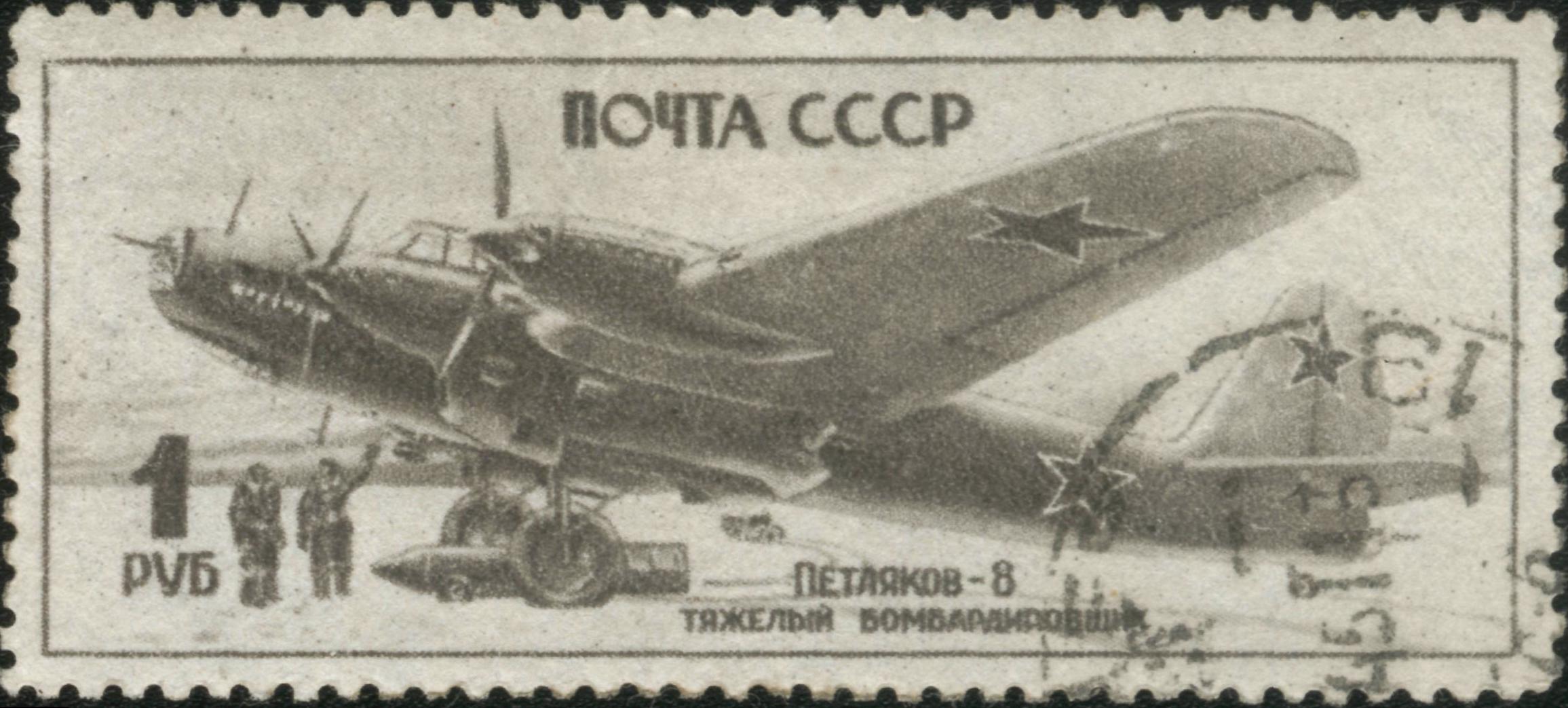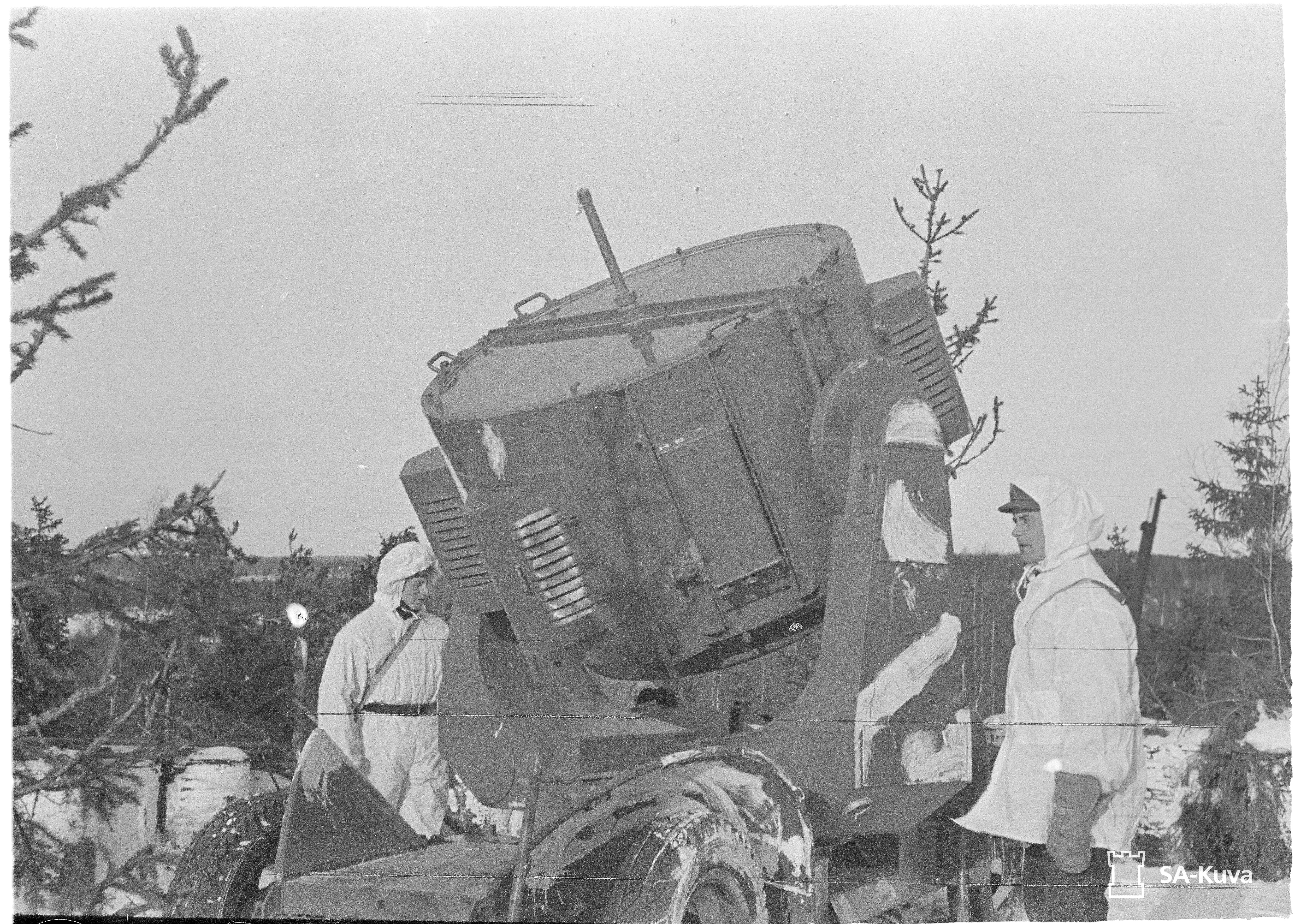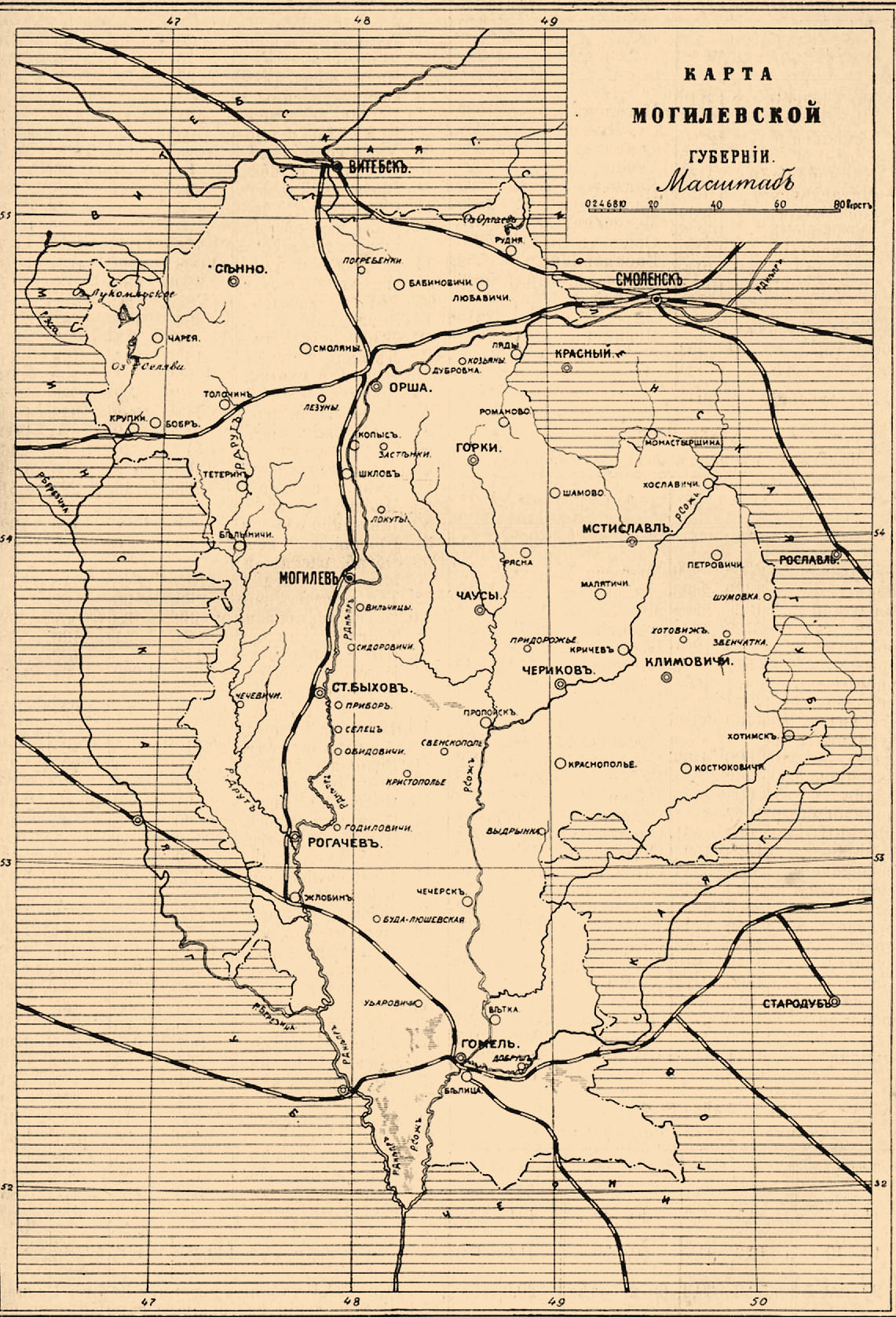|
FAB-5000
The FAB 5000NG (russian: ФАБ-5000НГ, where NG stands for its inventor, Nison Gelperin) was a 5,000 kilogram (11,000 lb) large air-dropped, thin cased, high explosive demolition bomb used by the Soviet Air Forces during World War II. The device was the most powerful aerial bomb in the wartime Soviet inventory (until the FAB-9000 demolition bomb was developed during the Cold War as part of the M-46 series). Development The bomb was designed by Soviet chemical engineer (1903-1989) in 1942. Gelperin projected and built bombs with tiny metal casings, in order to reduce the use of cast iron and aluminium. In Gelperin's developments, the metal casings represented only 35 percent of the bomb's weight. By 1942, the State Defense Committee of the Soviet Union perceived the need of weapons that could hit hard industrial and military facilities, marshaling yards and fortifications, without the usual scattering of medium-weight bombs. The first attempt came in the form of an explosive u ... [...More Info...] [...Related Items...] OR: [Wikipedia] [Google] [Baidu] |
Pe-8 Kratowo Winter
The Petlyakov Pe-8 (russian: Петляков Пе-8) was a Soviet heavy bomber designed before World War II, and the only four-engine bomber the USSR built during the war. Produced in limited numbers, it was used to bomb Berlin in August 1941. It was also used for so-called "morale raids" designed to raise the spirit of the Soviet people by exposing Axis vulnerabilities. Its primary mission, however, was to attack German airfields, rail yards and other rear-area facilities at night, although one was used to fly the People's Commissar of Foreign Affairs (Foreign Minister) Vyacheslav Molotov from Moscow to the United States in 1942. Originally designated the TB-7, the aircraft was renamed the Pe-8 after its primary designer, Vladimir Petlyakov, died in a plane crash in 1942. Supply problems complicated the aircraft's production and the Pe-8s also had engine problems. As Soviet morale boosters, they were also high-value targets for the Luftwaffe's fighter pilots. The loss rate of ... [...More Info...] [...Related Items...] OR: [Wikipedia] [Google] [Baidu] |
Bombing Of Helsinki In World War II
Helsinki, the capital of Finland, was bombed repeatedly during World War II. Between 1939 and 1944, Finland was subjected to a number of bombing campaigns by the Soviet Union. The largest were three raids in February 1944, which have been called The Great Raids Against Helsinki. Helsinki's air defence In the autumn of 1939, Helsinki was protected by the ''1st Anti Aircraft Regiment'' consisting of four heavy anti-aircraft batteries of three to four guns each, one light AA battery and one AA machine gun company. The air defence of Helsinki was significantly strengthened from spring 1943 onwards under the lead of Colonel Pekka Jokipaltio. During the Continuation War, Germany provided two early warning radars and four gun laying radars to Helsinki, further, 18 very effective German heavy 88 mm AA guns were also placed in Helsinki. The new six-gun batteries were grouped at Lauttasaari, Käpylä and in Santahamina. By February 1944 Helsinki was protected by 13 light and heav ... [...More Info...] [...Related Items...] OR: [Wikipedia] [Google] [Baidu] |
FAB-9000
FAB-9000 (ФАБ-9000) was a very large conventional high explosive bomb developed early in the Cold War. The bombs were used by the Iraqi Air Force The Iraqi Air Force (IQAF or IrAF) ( ar, القوات الجوية العراقية, Al Quwwat al Jawwiyah al Iraqiyyah}) is the aerial warfare service branch of the Iraqi Armed Forces. It is responsible for the defense of Iraqi airspace as well ... during the Iran-Iraq war, being dropped from Tu-22 Blinder bombers on military, industrial and civilian targets. See also * FAB-5000 References Cold War aerial bombs of the Soviet Union Military equipment introduced in the 1950s {{Bomb-stub ... [...More Info...] [...Related Items...] OR: [Wikipedia] [Google] [Baidu] |
Soviet Union
The Soviet Union,. officially the Union of Soviet Socialist Republics. (USSR),. was a List of former transcontinental countries#Since 1700, transcontinental country that spanned much of Eurasia from 1922 to 1991. A flagship communist state, it was nominally a Federation, federal union of Republics of the Soviet Union, fifteen national republics; in practice, both Government of the Soviet Union, its government and Economy of the Soviet Union, its economy were highly Soviet-type economic planning, centralized until its final years. It was a one-party state governed by the Communist Party of the Soviet Union, with the city of Moscow serving as its capital as well as that of its largest and most populous republic: the Russian Soviet Federative Socialist Republic, Russian SFSR. Other major cities included Saint Petersburg, Leningrad (Russian SFSR), Kyiv, Kiev (Ukrainian Soviet Socialist Republic, Ukrainian SSR), Minsk (Byelorussian Soviet Socialist Republic, Byelorussian SSR), Tas ... [...More Info...] [...Related Items...] OR: [Wikipedia] [Google] [Baidu] |
Belarusian Auxiliary Police
The Belarusian Auxiliary Police ( be, Беларуская дапаможная паліцыя, Biełaruskaja dapamožnaja palicyja; german: Weißruthenische Schutzmannschaften, or Hilfspolizei) was a collaborationist paramilitary force established in July 1941. Staffed by local inhabitants from German-occupied Belarus, it had similar functions to those of the German Ordnungspolizei in other occupied territories. The activities of the formation were supervised by defense police departments, local commandants' offices, and garrison commandants. The units consisted of one police officer for every 100 rural inhabitants and one police officer for every 300 urban inhabitants. Ordnungspolizei was in charge of guard duty, and included both stationary and mobile posts plus groups of orderlies. It was subordinate to the defense police leadership. Activities Belarusian Auxiliary Police participated in civilian massacres across villages on the territory of modern-day Belarus; dubbed the ... [...More Info...] [...Related Items...] OR: [Wikipedia] [Google] [Baidu] |
Mogilev
Mogilev (russian: Могилёв, Mogilyov, ; yi, מאָלעוו, Molev, ) or Mahilyow ( be, Магілёў, Mahilioŭ, ) is a city in eastern Belarus, on the Dnieper River, about from the border with Russia's Smolensk Oblast and from the border with Russia's Bryansk Oblast. , its population was 360,918, up from an estimated 106,000 in 1956. It is the administrative centre of Mogilev Region and the third-largest city in Belarus. History The city was first mentioned in historical records in 1267. From the 14th century, it was part of the Grand Duchy of Lithuania, and since the Union of Lublin (1569), part of the Polish–Lithuanian Commonwealth, where it became known as ''Mohylew''. In the 16th-17th centuries, the city flourished as one of the main nodes of the east–west and north–south trading routes. In 1577, Polish King Stefan Batory granted it city rights under Magdeburg law. In 1654, the townsmen negotiated a treaty of surrender to the Russians peacefully ... [...More Info...] [...Related Items...] OR: [Wikipedia] [Google] [Baidu] |
Belarus
Belarus,, , ; alternatively and formerly known as Byelorussia (from Russian ). officially the Republic of Belarus,; rus, Республика Беларусь, Respublika Belarus. is a landlocked country in Eastern Europe. It is bordered by Russia to the east and northeast, Ukraine to the south, Poland to the west, and Lithuania and Latvia to the northwest. Covering an area of and with a population of 9.4 million, Belarus is the 13th-largest and the 20th-most populous country in Europe. The country has a hemiboreal climate and is administratively divided into seven regions. Minsk is the capital and largest city. Until the 20th century, different states at various times controlled the lands of modern-day Belarus, including Kievan Rus', the Principality of Polotsk, the Grand Duchy of Lithuania, the Polish–Lithuanian Commonwealth, and the Russian Empire. In the aftermath of the Russian Revolution in 1917, different states arose competing for legitimacy amid the ... [...More Info...] [...Related Items...] OR: [Wikipedia] [Google] [Baidu] |
Helsinki
Helsinki ( or ; ; sv, Helsingfors, ) is the Capital city, capital, primate city, primate, and List of cities and towns in Finland, most populous city of Finland. Located on the shore of the Gulf of Finland, it is the seat of the region of Uusimaa in southern Finland, and has a population of . The Helsinki urban area, city's urban area has a population of , making it by far the List of urban areas in Finland by population, most populous urban area in Finland as well as the country's most important center for politics, education, finance, culture, and research; while Tampere in the Pirkanmaa region, located to the north from Helsinki, is the second largest urban area in Finland. Helsinki is located north of Tallinn, Estonia, east of Stockholm, Sweden, and west of Saint Petersburg, Russia. It has History of Helsinki, close historical ties with these three cities. Together with the cities of Espoo, Vantaa, and Kauniainen (and surrounding commuter towns, including the eastern ... [...More Info...] [...Related Items...] OR: [Wikipedia] [Google] [Baidu] |
Ukraine
Ukraine ( uk, Україна, Ukraïna, ) is a country in Eastern Europe. It is the second-largest European country after Russia, which it borders to the east and northeast. Ukraine covers approximately . Prior to the ongoing Russian invasion, it was the eighth-most populous country in Europe, with a population of around 41 million people. It is also bordered by Belarus to the north; by Poland, Slovakia, and Hungary to the west; and by Romania and Moldova to the southwest; with a coastline along the Black Sea and the Sea of Azov to the south and southeast. Kyiv is the nation's capital and largest city. Ukraine's state language is Ukrainian; Russian is also widely spoken, especially in the east and south. During the Middle Ages, Ukraine was the site of early Slavic expansion and the area later became a key centre of East Slavic culture under the state of Kievan Rus', which emerged in the 9th century. The state eventually disintegrated into rival regional powers and ... [...More Info...] [...Related Items...] OR: [Wikipedia] [Google] [Baidu] |
Friendly Fire
In military terminology, friendly fire or fratricide is an attack by belligerent or neutral forces on friendly troops while attempting to attack enemy/hostile targets. Examples include misidentifying the target as hostile, cross-fire while engaging an enemy, long range ranging errors or inaccuracy. Accidental fire not intended to attack enemy/hostile targets, and deliberate firing on one's own troops for disciplinary reasons, is not called friendly fire,Regan, Geoffrey (2002) ''Backfire: a history of friendly fire from ancient warfare to the present day'', Robson Books and neither is unintentional harm to civilian or neutral targets, which is sometimes referred to as collateral damage. Training accidents and bloodless incidents also do not qualify as friendly fire in terms of casualty reporting. Use of the term "friendly" in a military context for allied personnel started during the First World War, often when shells fell short of the targeted enemy. The term ''friendly fire ... [...More Info...] [...Related Items...] OR: [Wikipedia] [Google] [Baidu] |
Kamenets-Podolsky Pocket
Kamianets-Podilskyi ( uk, Ка́м'яне́ць-Поді́льський, russian: Каменец-Подольский, Kamenets-Podolskiy, pl, Kamieniec Podolski, ro, Camenița, yi, קאַמענעץ־פּאָדאָלסק / קאַמעניץ, Kamenetz-Podolsk / Kamenitz) is a city on the Smotrych River in western Ukraine, to the north-east of Chernivtsi. Formerly the administrative center of the Khmelnytskyi Oblast, the city is now the administrative center of the Kamianets-Podilskyi district within the Khmelnytskyi province. It hosts the administration of Kamianets-Podilskyi urban hromada. Current population has been estimated as In 1919–1920, during the unfolding Ukrainian–Soviet War, the city officially served as the temporary capital of the Ukrainian People's Republic. Name The first part of the city's dual name originates from ' ( uk, камiнь) or ', meaning 'stone' in Old Slavic. The second part of its name relates to the historic region of Podolia ( uk ... [...More Info...] [...Related Items...] OR: [Wikipedia] [Google] [Baidu] |


.jpg)


